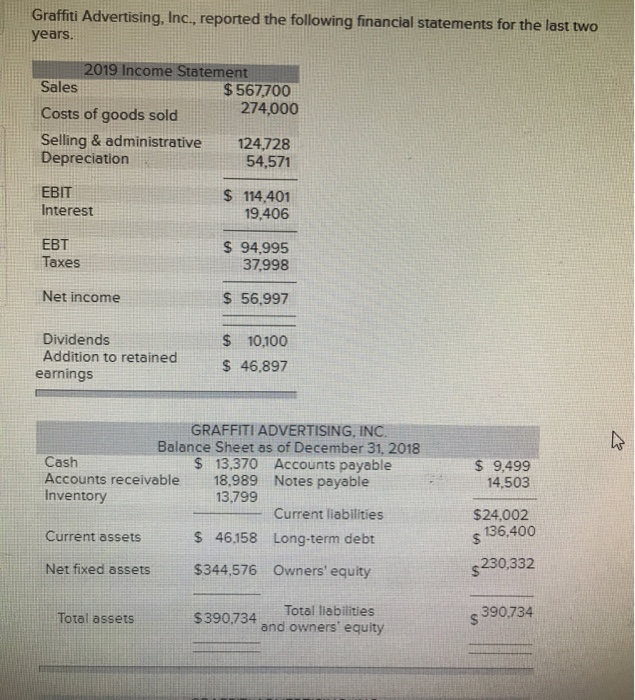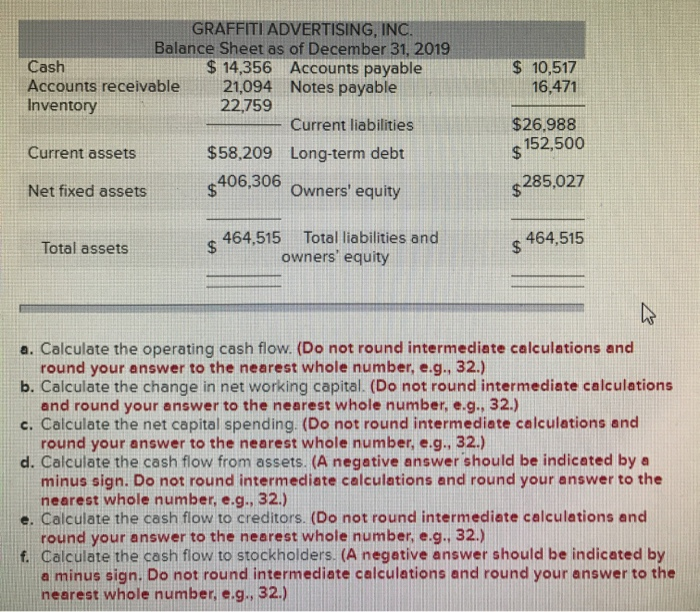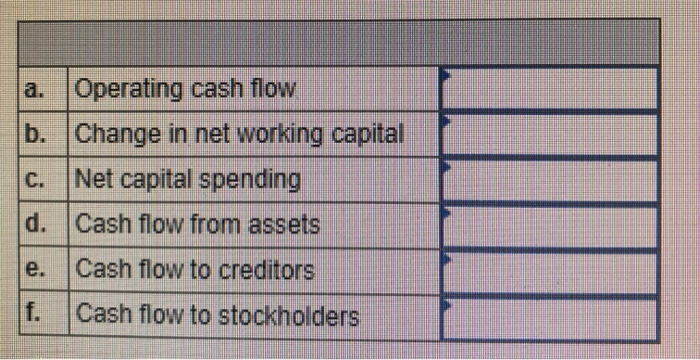Graffiti Advertising, Inc., reported the following financial statements for the last two years. 2019 Income Statement Sales $ 567,700 274,000 Costs of goods sold Selling & administrative 124,728 Depreciation 54,571 EBIT Interest $ 114,401 19,406 EBT Taxes $ 94,995 37,998 Net income $ 56.997 Dividends Addition to retained earnings $ 10,100 $ 46.897 ET GRAFFITI ADVERTISING, INC. Balance Sheet as of December 31, 2018 Cash $ 13,370 Accounts payable Accounts receivable 18.989 Notes payable Inventory 13,799 Current liabilities Current assets $ 46,158 Long-term debt $ 9,499 14,503 $24,002 $ 136,400 $ 230,332 Net fixed assets $344,576 Owners' equity Total assets Total liabilities $390.734 and owners' equity $ 390,734 GRAFFITI ADVERTISING, INC. Balance Sheet as of December 31, 2019 Cash $ 14,356 Accounts payable Accounts receivable 21,094 Notes payable Inventory 22,759 Current liabilities Current assets $58,209 Long-term debt $ 10,517 16,471 $26.988 152,500 $ $285,027 Net fixed assets $ 406,306 Owners' equity $ Total assets 464,515 Total liabilities and owners' equity 464,515 $ a. Calculate the operating cash flow. (Do not round intermediate calculations and round your answer to the nearest whole number, e.g., 32.) b. Calculate the change in net working capital. (Do not round intermediate calculations and round your answer to the nearest whole number, e.g., 32.) c. Calculate the net capital spending. (Do not round intermediate calculations and round your answer to the nearest whole number, e.g. 32.) d. Calculate the cash flow from assets. (A negative answer should be indicated by a minus sign. Do not round intermediate calculations and round your answer to the nearest whole number, e.g., 32.) e. Calculate the cash flow to creditors. (Do not round intermediate calculations and round your answer to the nearest whole number, e.g., 32.) f. Calculate the cash flow to stockholders. (A negative answer should be indicated by a minus sign. Do not round intermediate calculations and round your answer to the nearest whole number, e.g., 32.) Operating cash flow b. Change in net working capital C. Net capital spending d. Cash flow from assets e. Cash flow to creditors Cash flow to stockholders









